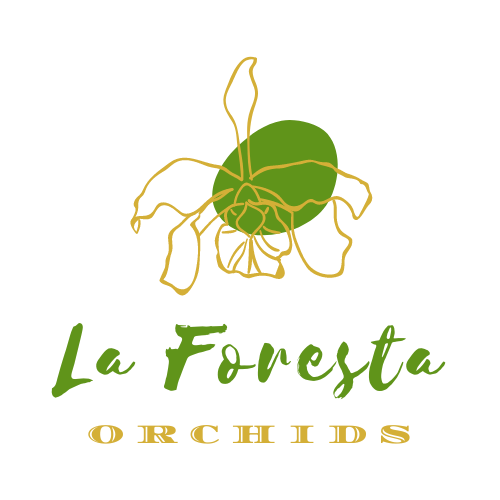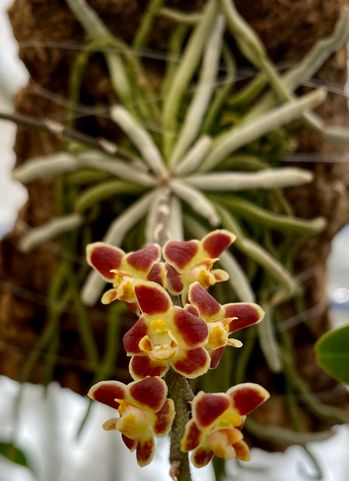La Foresta Orchids
Chiloschista lunifera
Chiloschista lunifera
Couldn't load pickup availability
Chiloschista lunifera, also known as The Moon Chiloschista, is a fascinating, leafless epiphyte found in the forests of the eastern Himalayas, India, Assam, Myanmar, Thailand, and Laos. This orchid thrives at altitudes of 150-800 meters, where it clings to tree trunks in semi-deciduous and deciduous forests. Its silvery-gray roots absorb light and nutrients, making it a unique addition to any orchid collection.
In fall or winter, Chiloschista lunifera produces a striking display of fragrant, dark red flowers, each measuring 1.5-2 cm in diameter. The delicate blooms emerge from a 7-30 cm raceme, creating an elegant contrast against its root system.
Cultivation Tips
🌞 Light Requirements
This species thrives in bright, indirect light at 16,000-20,000 lux. Direct sunlight can damage the delicate root surfaces, so filtered light or artificial grow lights work best. A 12-hour photoperiod is ideal, but during its rest period (November to March), reduce light exposure to 10 hours daily.
🌡 Temperature & Humidity
- Growing season (April-October): 27-29°C during the day, 20-21°C at night.
- Rest period (November-March): Gradually lower temperatures to 25-26°C daytime and 12-13°C nighttime.
- Humidity: Maintain 75-85% humidity throughout the year. In its resting phase, humidity can drop slightly to 60-65%.
💦 Watering & Air Circulation
Chiloschista lunifera thrives with frequent watering during its active growth phase. Mist up to twice a day, ensuring roots dry out between waterings. During the rest period, reduce watering to every 3-4 days while maintaining humidity levels around 80%.
🌱 Mounting & Root Care
This orchid is best grown with bare roots on a smooth wooden mount, such as cork or hardwood. Avoid using sphagnum moss, as its roots require exposure to light for photosynthesis. Ensure good airflow, but avoid excessive drying, as it can lead to dehydration.
🌿 Fertilizing
Feed with a diluted orchid fertilizer (1/8 of the recommended dose) once a week during active growth. Suspend fertilizing during dormancy.
⏳ Rest Period & Flowering
A slight temperature drop and reduced watering encourage blooming. Lower nighttime temperatures (12-13°C) and decrease watering frequency to trigger flower spikes. Keep humidity at 80% from November to January, gradually reducing it to 60-65% by March. Resume normal watering and temperatures in April as new growth begins.
This is a blooming size mounted orchid, about 1 to 2 years blooms, grown from seed, limited!
Chiloschista lunifera is a truly mesmerizing orchid, perfect for growers who enjoy unique, leafless species. With proper care, this Moon Orchid will reward you with its dazzling blooms season after season.






